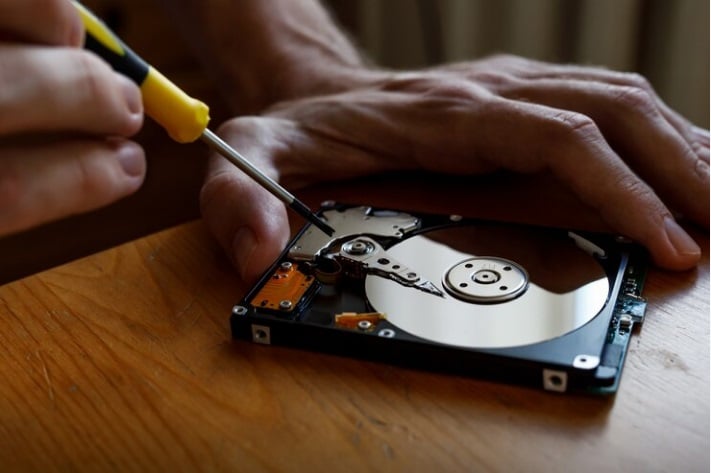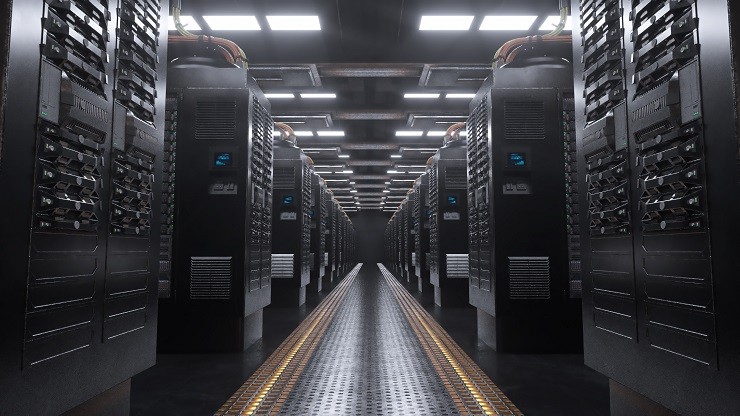When it comes to enterprise SSD, there’s nothing simple.
Oh, for simpler times. When enterprise flash started to gain ground in the storage world around seven years ago, the available format was the solid state drive (SSD). It was neatly manufactured to fit into the disk slot of a storage array.
But since those blissful bucolic beginnings, complexity has reigned. As well as SSDs, we now have so many labels for flash-based storage. This includes PCIe-based flash, custom flash modules (CFM), NVMe-based SSDs, server-based flash, storage-attached flash, network-attached flash, memory channel-attached flash, SAS SSDs¸ SATA SSDs, Fibre Channel (FC) SSDs, and even Data Center SSDs – and then there are all flash arrays (AFA) and hybrid flash arrays (HFA). And of course there are the many types of flash itself to further complicate matters.
“Flash is permeating the enterprise through several different deployment architectures that include both server- and network-based approaches,” said IDC analyst Eric Burgener. “Flash deployments at scale will allow enterprises to reap not only performance benefits of flash but secondary economic benefits such as fewer devices to meet storage performance requirements, reduced energy and floor space consumption, fewer servers needed to drive storage performance and lower software licensing costs.”
Each analyst and company, however, seems to define things slightly differently or favor one form factor over another. So what is the best enterprise SSD format?
Greg Schulz, an analyst with StorageIO Group, explained that part of the confusion may be due to a subtle shift in the definition of SSD from solid state drive to solid state device, in some cases. Some people hold firmly to the drive definition, while others favor the looser device concept.
Sticking with SSDs as solid state drives for now, the plus of that architecture is that it fits snuggly into time-honored storage array designs, and can take advantage of existing controller architectures. This simplifies the design and manufacturing process. However, this approach can bottleneck the performance potential of flash.
The other main approach is to bring the flash closer to the compute as in CFMs, though there are several ways to do this as covered in the complex terminology outlined above. The CFM typically has its own controllers and is built on some kind of card to slot into a motherboard, for example. The goals are to maximum the performance and eliminate the bottlenecks that may exist in other enterprise SSD designs.
“Location matters, so you want to get as many solid state resources as close to your applications as possible,” said Schulz. “But to keep it cost effective, you may need to leverage SATA, and SAS SSD drives to satisfy your need for capacity.”
Market Leadership And Innovation
The many labels in circulation can make it difficult to determine who is the market leader in SSD. Jim Handy, General Director at Objective Analysis, outlined which vendors he reckoned were the leaders in some of the major categories. He said Western Digital’s HGST leads SAS SSD unit shipments, and probably also PCIe SSD (courtesy of its acquisition of SanDisk, FusionIO and Virident). Intel, though, is out on front on Data Center SSDs, though there definition is a little vague. While these leadership positions relate to the mainstream enterprise SSD marketplace, even this breakdown is being upended by rapid change and technological innovation.
“There are a few budget providers who supply the bulk of the SSDs used in hyperscale applications, since hyperscale companies tend to be fixated on cost,” said Handy.
He added that the market used to be broken down into two camps: PCIe and SAS for high speed at a high price, and SATA for better economy at a slower speed. Today PCIe flash is still more expensive than SATA, but this will be changing soon with the ramp of PCIe m.2 SSDs. When it does, the rationale to use SATA will weaken, and over time PCIe will become the dominant interface for flash in computing, Handy said.
Keeping With Tradition
That said, innovation is also enhancing the performance of traditional SSD-based architectures.
“The computing community is coming to the realization that a Hard Disk Drive (HDD) interface and an HDD software I/O stack is not a good way to manage flash, since it slows down flash’s performance,” said Handy. “NVMe has been devised to handle the interface, and various software products and standards help to move past the bottlenecks in the software stack.”
EMC, for one, uses standard form factor 2.5″ SAS SSDs for its XtremIO flash platform.
“We do not have plans to pursue custom form factors in the future as we do not see an inherent advantage in them and prefer to benefit from a wide supplier base (similar to why EMC did not vertically integrate and make its own HDDs),”said Tamir Segal, Senior Manager, Product Marketing Core Technology Division of EMC. “The SSD form factor also has advantages in hot-swap serviceability and the ability to leverage common drive shelf hardware with other EMC products.”
But EMC isn’t putting all of its eggs in one SSD basket. Other EMC products such as VMAX All Flash and Unity utilize different forms of SSD’s, but all are based on commodity SSD technologies available from the big manufacturers in this market. So what about PCIe?
“PCI-E based flash will probably remain a niche product for caching purposes only,” said Segal. “But it’s the software that truly adds value.”
Most vendors, in fact, tout the advantages of their own particular software architecture as the best enterprise SSD approach. Chris Tsilipounidakis, Manager of Product Marketing at Tegile, said his company combines a hardware and software design that optimizes highly randomized workloads by isolating metadata and logs into their own containers. Its metadata acceleration technique isolates and aggregates metadata away from user and application data onto dedicated logical flash devices with optimized I/O paths. This boosts performance as I/O is no longer gated by interspersing data with metadata. This also provides inline deduplication without a performance impact as the dedupe table also resides on dedicated logical flash devices.
No Flash In The Pan
Just about every vendor makes a convincing pitch for its particular flash architecture. But whatever the SSD format, the best advice is to test any flash storage product in your own environment to see how it does with your own applications and workloads.
As for the debate over where exactly to put flash, Handy sees SSDs as belonging in the server, inside the storage array and being used in various configurations and form factors for some time to come.
“Users are getting more savvy and are looking to put inexpensive SSDs into most of their systems as a way to reduce the need to go with more costly options: sharing a database across a number of servers, increasing the DRAM memory to the most a server can handle, or buying a new SAN,” said Handy.
That’s why he brings attention to the fact that the largest growth market for SSDs is applications that don’t yet use them. While it may appear that everyone has turned to flash, the reality is that it is far from the case. Certainly, the market is booming, but there is plenty of room for growth. IDC estimates enterprise all solid state spending will exceed $1.6 billion this year, up from $0.3 billion in 2012. With the price coming down by more than fivefold in the last four years, IDC expects SSD growth to continue to grow steeply in all its many configurations, form factors and architectures. Indeed, there are many new areas of potential deployment still to open up.
“To date, flash has not been used in secondary storage environments like backup, archiving, DR and content repositories – outside of limited use to cache metadata and indexes,” said Burgener.





